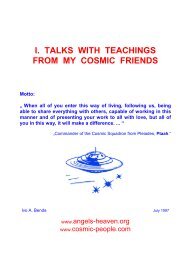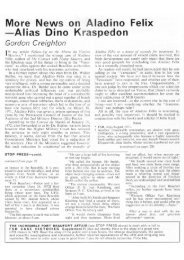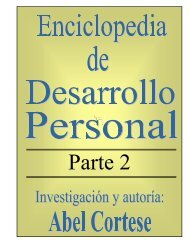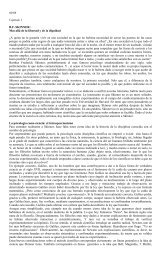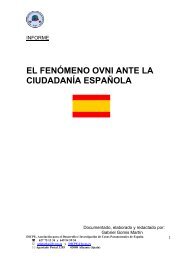The Word That is God
The Word That is God
The Word That is God
Create successful ePaper yourself
Turn your PDF publications into a flip-book with our unique Google optimized e-Paper software.
Upan<strong>is</strong>had)<br />
“[<strong>The</strong> sage’s] inner possession <strong>is</strong> Om, the Pranava. Till h<strong>is</strong> final breath <strong>is</strong> out, he shall not<br />
abandon it.” (Satyayani Upan<strong>is</strong>had)<br />
“One should utter that by mouth, practice that with h<strong>is</strong> body, and should utter that<br />
mentally, every day.” (Yogachudamanya Upan<strong>is</strong>had 87)<br />
“It <strong>is</strong> incumbent on a man to constantly recite the mantra Om which heads the l<strong>is</strong>t of all its<br />
compeers in respect of merit and sanctity.” (Agni Purana)<br />
“[To attain the realm (state) of Shiva], the devotee should repeat the Pranava mantra<br />
every day.” (Shiva Purana, Vidyeshwara Samhita 11:36)<br />
“By repeating the Pranava daily the devotee becomes perpetually pure.” (Shiva Purana,<br />
Vidyeshwarasamhita 17:22)<br />
Om should be intoned in time with the breath<br />
“Speech and breath are joined together in the Syllable Om.” (Chandogya Upan<strong>is</strong>had 1.1.6)<br />
Both speech and breath are manifested and reunited in Om–both in speaking Om aloud and in<br />
mentally intoning it in time with the breath. Om <strong>is</strong> the point of their origin and their return.<br />
By joining Om and the breath in japa and meditation we begin moving back to the state where<br />
they are one.<br />
“One should meditate on the breath in the mouth as the udgitha, for it <strong>is</strong> continually<br />
sounding ‘Om.’” (Chandogya Upan<strong>is</strong>had 1.5.3) In both japa and meditation we join intonations<br />
of Om to the breath because on the subtle levels the breath <strong>is</strong> always producing the sound of<br />
Om. We can even say that the soul breathes Om. So by consciously joining Om to our breathing<br />
we can link up with our soul-consciousness and enter into it. Th<strong>is</strong> <strong>is</strong> what <strong>is</strong> happening when<br />
during meditation our intonations of Om become more subtle and wh<strong>is</strong>per-like, and from<br />
soul-consciousness we will pass into spirit-consciousness–all through Om.<br />
“With Om alone he should breathe.” (Amritabindu Upan<strong>is</strong>had 20)<br />
“Because in th<strong>is</strong> manner he joins the breath, the Syllable Om, and all th<strong>is</strong> in its manifoldness<br />
therefore th<strong>is</strong> <strong>is</strong> called Yoga [joining]. <strong>The</strong> oneness of the breath, the mind, and likew<strong>is</strong>e of<br />
the senses [through japa of Om with the breath] and the abandonment of all conditions of<br />
ex<strong>is</strong>tence, th<strong>is</strong> <strong>is</strong> designated as Yoga. One draws in the pranas by means of the Syllable Om.”<br />
(Maitri Upan<strong>is</strong>had 6:22-26)<br />
“In the breathing, that [Om] has its place in the heart that casts forth light. In the<br />
breathing that [Om] <strong>is</strong> like the action of smoke; for when there <strong>is</strong> motion of air the smoke<br />
r<strong>is</strong>es to the sky in one column and follows afterward one branch after another. <strong>That</strong> <strong>is</strong> like<br />
throwing salt into water, like heat in melting butter.” (Maitri Upan<strong>is</strong>had 7:11)<br />
“[Remembrance of the Pranava] must become so automatic that you cannot breathe<br />
without remembering It.” (Sri Anandamayi Ma, in Death Must Die by Ram Alexander)<br />
“<strong>The</strong> breath of Omkar should be inside you, then there <strong>is</strong> purity.” (Avadhuta Nityananda<br />
Paramhansa, Nitya Sutra 124)<br />
“<strong>The</strong> Omkar should be drawn inside with the breath like water <strong>is</strong> drawn up from a well.<br />
And like the pot <strong>is</strong> let down into the well for a fresh fill, so the exhalation should be released<br />
with Om.” (Avadhuta Nityananda Paramhansa, Nitya Sutra 161)<br />
“Chant ‘Om’ with every breath.” (Swami Rama Tirtha)<br />
“<strong>The</strong> more you practice [repetition of Om joined with the breath] the calmer you will be.<br />
Just think of ‘Om’ and you can practice even while you are sitting at your work. You will be all<br />
117



